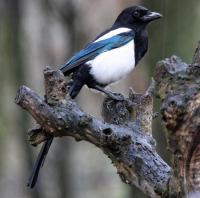- Home
- FAQs
- Customer Video Gallery
- Customer Photo Gallery
- Bird Facts
- Bird Food Blog
- Bird Information
- Feeding Advice
- Small Animal Information
- A to Z of Guinea Pigs
- A to Z of Hamsters
- A to Z of Rabbits
- Basic Care for Guinea Pigs
- Basic Care for Hamsters
- Basic Care for Rabbits
- Basic care for Chinchillas
- Basic care for Ferrets
- Basic care for Gerbils
- Basic care for Mice
- Basic care for Rats
- Buying a Healthy Small Animal
- Does your Reptile need a Licence
- Equipment for Ferrets
- Equipment for Hamsters
- Equipment for Mice
- Equipment for your Chinchilla
- Equipment for your Gerbil
- Equipment for your Guinea Pig
- Equipment for your Rabbit
- Keeping a House Rabbit
- Dog Information
- Cat Information
- Customer Information
- Fat Balls
- Suet Pellets
- Straights
- Seed Mixes
- Suet Treats
- Mealworms
- Bird Feeders
- My Account
Hawfinches
Date: 2014-04-07 11:53:44 | Category: Bird Watching | Author: Neill Hunt
How many years since I last saw a Hawfinch...too many. When did you last see Hawfinch?Birds in the Lancashire area are now so uncommon that seeing one is a real Red Letter Day. Even on a national scale they have declined and unfortunately only 5-600 pairs now inhabit Britain’s countryside.

Looking back through my old notebooks to 1983, 20th March to be exact was the first time I ever clapped eyes on a Hawfinch. The location…Broughton near Preston, the site and birds have long gone and in its place stands a rather nice Hotel, what a shame. Not only was Broughton a site for Hawfinch it also hosted Lesser Spotted Woodpecker which on that particular date was a new bird for the year. Lesser Spotted Woodpeckers have gone in exactly the same direction as the Hawfinch, also disappearing from the Lancashire countryside and also nose diving throughout the country.

So, with this in mind, a couple of weeks ago I went to have a look for both Hawfinch and Lesser Spotted Woodpeckers, Hawfinch in Cumbria at Sizurgh Castle, a lovely location and Lesser Spotted Woodpecker in Cheshire at Moore Nature Reserve. Both these species are just about hanging on at these locations so it was an absolute joy to catch up with them. It won’t be too long before they are gone completely in the North West and what an absolute catastrophe that would be.
I was even emailed and messaged about extremely poor behaviour by some photographer’s / birders who’d broken down habitat in order to get a clearer view at one of the sites…disgraceful.
Let’s hope that these two species can cling on to their sites here in the North West, it would be such a shame to lose them.
If you decide to visit any of the sites, please make a donation to help support these declining birds.
If you visit Sizurgh Castle to look for Hawfinches, send your sightings to, Robert Pocklington at The National Trust he would appreciate any records.
More information on Hawfinch Identification can be found on our Twootz Website on the Bird Facts page.




.JPG)
